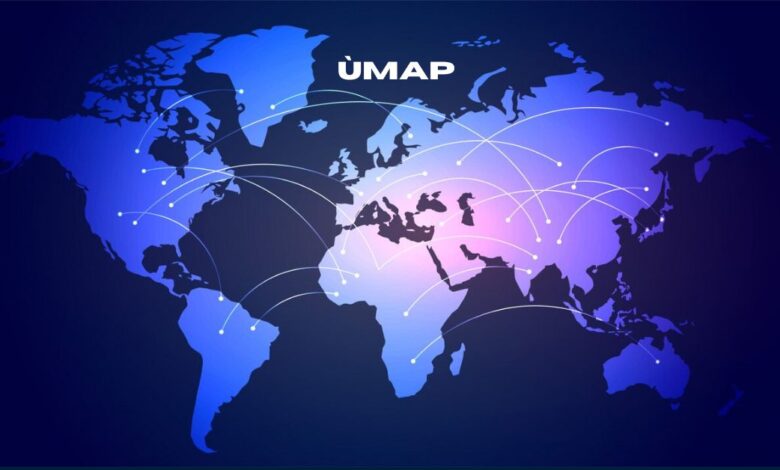ùmap The Complete Guide to Mapping: Unleashing the Potential of

Introduction to ùmap
At its essence, ùmap stands as a sophisticated mapping platform that offers users dynamic and interactive maps for a myriad of purposes. From basic navigation needs to complex geographic analysis, they boasts a wide array of features that cater to diverse user requirements.
Understanding the Concept of ùmap
Definition
Derived from the blend of “universal” and “map,” ùmap encapsulates its core as a versatile mapping tool accessible to users worldwide. It serves as a digital representation of geographical information, providing spatial context and visual insights.
Purpose
The primary objective of ùmap is to simplify spatial comprehension and decision-making. Whether it’s about finding directions to a nearby restaurant or analyzing demographic trends for urban planning, they empowers users with actionable geographical data.
History and Development
Origins of ùmap
The origins can be traced back to the early days of cartography when maps were hand-drawn representations of geographical features. With the advent of computers and digital mapping technologies, the concept of ùmap began to take shape.
Evolution of ùmap Technology
Over the years, ùmap has undergone significant advancements fueled by innovations in data collection, processing algorithms, and user interface design. From static paper maps to dynamic web-based applications, the evolution of ùmap has revolutionized the way we interact with spatial data.
You want to see: Käntäjää The Art and Science of Translation
Components of ùmap
Data Sources
One of the key components of its extensive database of geographic information sourced from various providers, including satellite imagery, aerial views, and publicly available data.
Mapping Algorithms
Behind the scenes, they utilizes sophisticated algorithms to process and visualize spatial data, enabling seamless navigation and accurate route planning.
User Interface
It’s interface is designed to be intuitive and user-friendly, allowing users to interact with maps and customize their viewing experience.
Applications
Navigation and Location Services
It’s most common use is for navigation purposes, helping users find the shortest route between two points, locate nearby amenities, and avoid traffic congestion.
Geographic Information Systems (GIS)
Additionally, it is used in GIS applications for spatial analysis, resource management, and environmental monitoring.
Urban Planning and Development
Urban planners and developers rely on it to visualize land use patterns, assess infrastructure needs, and make informed decisions for city planning and development projects.
Benefits
Accessibility
One of the key advantages of ùmap is its accessibility, allowing users to access maps anytime, anywhere, using various devices such as smartphones, tablets, and computers.
Customization
They offers a high degree of customization, allowing users to overlay different layers of information, adjust map styles, and create personalized maps tailored to their specific needs.
Real-time Updates
With real-time data feeds and constant updates, they ensures that users have access to the latest information, whether it’s traffic conditions, weather forecasts, or points of interest.
Challenges and Limitations
Data Accuracy
Despite its many benefits, they faces challenges, particularly regarding data accuracy and reliability. Outdated or inaccurate data can lead to errors in routing and direction.
Privacy Concerns
The widespread use of ùmap raises privacy concerns and data security issues, as location-based services collect and store sensitive information about users’ whereabouts and activities.
Technical Limitations
Furthermore, they may encounter technical limitations such as network connectivity issues, device compatibility issues, and software bugs that can affect its performance and usability.
Future Trends
AI Integration
Looking ahead, one of the emerging trends is the integration of artificial intelligence (AI) algorithms for advanced spatial analysis, prediction modeling, and personalized recommendations.
Augmented Reality
Another exciting development is the integration of augmented reality (AR) technology into ùmap, allowing users to overlay digital information onto the physical world in real-time.
Enhanced Data Visualization
Moreover, advancements in data visualization techniques will enhance the ability to convey complex spatial information in a more intuitive and compelling manner.
Conclusion
ùmap represents a significant advancement in mapping technology, offering users a powerful tool for navigating the digital landscape with ease and precision. Despite facing challenges and limitations, the future outlook it’s promising, with continued innovation driving its evolution towards greater accessibility, functionality, and usability.
Umap is a mapping platform with a vast database, advanced algorithms, and user interface. It’s used in navigation, GIS, and urban planning. Challenges include data accuracy, privacy, and technical limitations. Future trends include AI integration and augmented reality.
FAQs (Frequently Asked Questions)
- Is ùmap free to use?
Yes, it is available for free to users worldwide, with more premium features offered for a subscription fee. - Can ùmap be used offline?
Yes, users can download maps for offline use, allowing them to navigate without an internet connection. - How often it is updated?
It is updated regularly with new data and features to ensure users have access to the latest information. - Are there any alternatives to ùmap?
Yes, there are several alternatives including Google Maps, Apple Maps, and OpenStreetMap. - Is ùmap available on mobile devices?
Yes, it is available as a mobile app on both iOS and Android platforms, providing users with on-the-go access to maps and navigation tools.
